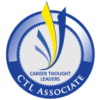Resume Writing Standards and Best Practices

The following post explores Resume Writing Standards and Best Practices.
In striving to prepare error-free and visually-satisfying Resumes, I compiled the following list as a framework and philosophy to approaching the Resume Writing process.
Read: Understanding Your Resume’s Audience
Related: Three Pillars for Establishing Your Career Profile
Building an interview-winning Resume requires (a) capturing the reader’s attention and (b) using proper grammar, punctuation, and spelling with consistent usage throughout.
Here’s what you need to know about Resume Writing Standards and Best Practices.
Overview
- Aim for one-full page or two-full pages, do your very best to avoid half pages.
- Try for clean page breaks. If possible, avoid carrying over a job description from page #1 to #2.
- Use one space after periods, not two spaces.
- Active language rather than passive language (avoid using: was, they, their, etc).
- Avoid fluff words and phrases like “goal-oriented”, “strong work ethic”, and “attention to detail”.
- Chronological is the default style; functional format is atypical in the modern environment.
- Vertical bar “|” to separate items on Resume, rather than using a bullet or some other symbol.
- Put periods at the end of bullets.
- Use Oxford Commas (milk, eggs, and toast = yes) – (milk, eggs and toast = no).
- Spell out terms in full initially i.e. “subject matter expert (SME)”. Once defined, use the acronym thereafter.
- Don’t use company-specific language and internal terminology or unrecognizable acronyms.
- Avoid leaving only one or two words on a line by itself.
- Never use first person (I, me, we, etc).
- Spell out billion ($1 billion), million ($1 million); use numbers for thousands ($10,000, $142,000, etc) when referring to money.
- Spell out billion and million for units of measurement (site generated “five million” unique visitors). Use numbers in the tens, hundreds, and thousands for units of measurement (site generated 264,000 page views).
- Numbers (1-10) are spelled out (one, two, three). Larger numbers numerically (540, 2,243, etc).
- List current/active experience in present tense (“lead a team of five”).
- Non-current experience should be written in past tense (“led a team five”).
Contact Information
- Include only city, st, zip code on Resume (omit street address – privacy).
- Include email, primary phone (pick one), LinkedIn URL, and personal website (if applicable).
- Use a professional sounding email address if your current email handle is inappropriate.
- Ensure email address and LinkedIn URL are hyperlinked within the document. Make sure links are neither blue, nor underlined. They should still be hyperlinked (clickable). Simply color black and remove the underline.
- Use lowercase for all email, website, and LinkedIn URLs on documents.
Career Profile / Branding
- Try to use a specific job title in the header i.e. “Sr. Project Manager” when possible.
- Or, use a broader term in the header i.e. “Leader in Project Management” if there’s some ambiguity.
- Include an action statement below the header (use active language to describe the essence of the header).
- Include a 3-6 line paragraph summary and use either implied third-person (Leverages 10+ years of experience) or implied first-person point (Leverage 10+ years of experience).
Core Competencies
- Identify 9-15 keywords (hard skills) aligned with job focus and industry expertise.
- Avoid using soft skill terms in the core competencies section, such as “people skills” and “detail oriented”.
Job Descriptions
- Each job description will include paragraph content (2 lines minimum) and bullet points/highlights.
- Include a one-line company description for each company / employer.
- Make the distinction between high-level duties (paragraph) and achievements (bullet points).
- Eight bullets maximum per job description. Too much is overkill.
- You may use “sub-bullet points” that are indented from the main bullet to add description.
- Older roles may be presented in a condensed version or altogether omitted from the Resume.
Education
- Only list completed degrees.
- Include city, st, and dates of graduation (within last 10 years).
- Omit GPA, honors, awards, student activities for non-entry level professionals.
- Spell out the degree in full (Bachelor of Arts) instead of listing abbreviated version (BA).
- If you went to school (a), earned credits, and then transferred to school (b) there’s usually no reason to list school (a).
Licenses / Certifications
- Spell out the name of the certification in full (Project Management Professional).
- Include the abbreviation for it as well (PMP).
- Include the awarding body (Project Management Institute).
- It should read like this: Project Management Professional (PMP) | Project Management Institute.
- Include dates where applicable.
Professional Affiliations
- Spell out the name of the organization in full (Project Management Institute).
- Include the abbreviation for it as well (PMI).
- It should read like this on the Resume: Project Management Institute (PMI) – Member.
- Include dates where applicable.
Technical Skills
- Breakdown technical skills by category when possible (hardware, software, languages, applications, etc).
- List technical skills either in career profile (page #1) or below education (page #2) depending on relevancy.
Languages
- List the languages spoken and level of fluency (beginner, intermediate, fluent, native).
- Don’t include English as a language on the documents (it’s assumed).
Additional Sections
- Create additional sections as needed for community involvement, language skills, security clearances, and more.
Publications
- List information according to MLA format.
Document Properties
- Save the file as (First Initial.Last Name.Resume), i.e. “M.Johnson.Resume”.
- Make sure the author’s name within the document’s properties is accurate.
Applicant Tracking Systems (ATS)
- Use “paragraph” function for spacing in MS Word (not hard enter).
- Use a header on page #2, no header on page #1.
- No tables or text boxes. Use clearly defined section headings.
- Don’t use wingdings and webdings for bullet points/symbols.
- Acceptable Sans Serif fonts – Arial, Calibri, Verdana, Tahoma, and Trebuchet MS.
- Acceptable Serif fonts – Times New Roman, Cambria, Book Antiqua, Century, and Garamond.
In Conclusion
Many of these standards and best practices are subjective (opinion). It’s okay to disagree and this isn’t about “right vs wrong”. These are simply what I’ve gravitated to after many trials and tribulations as a Resume Writer.








